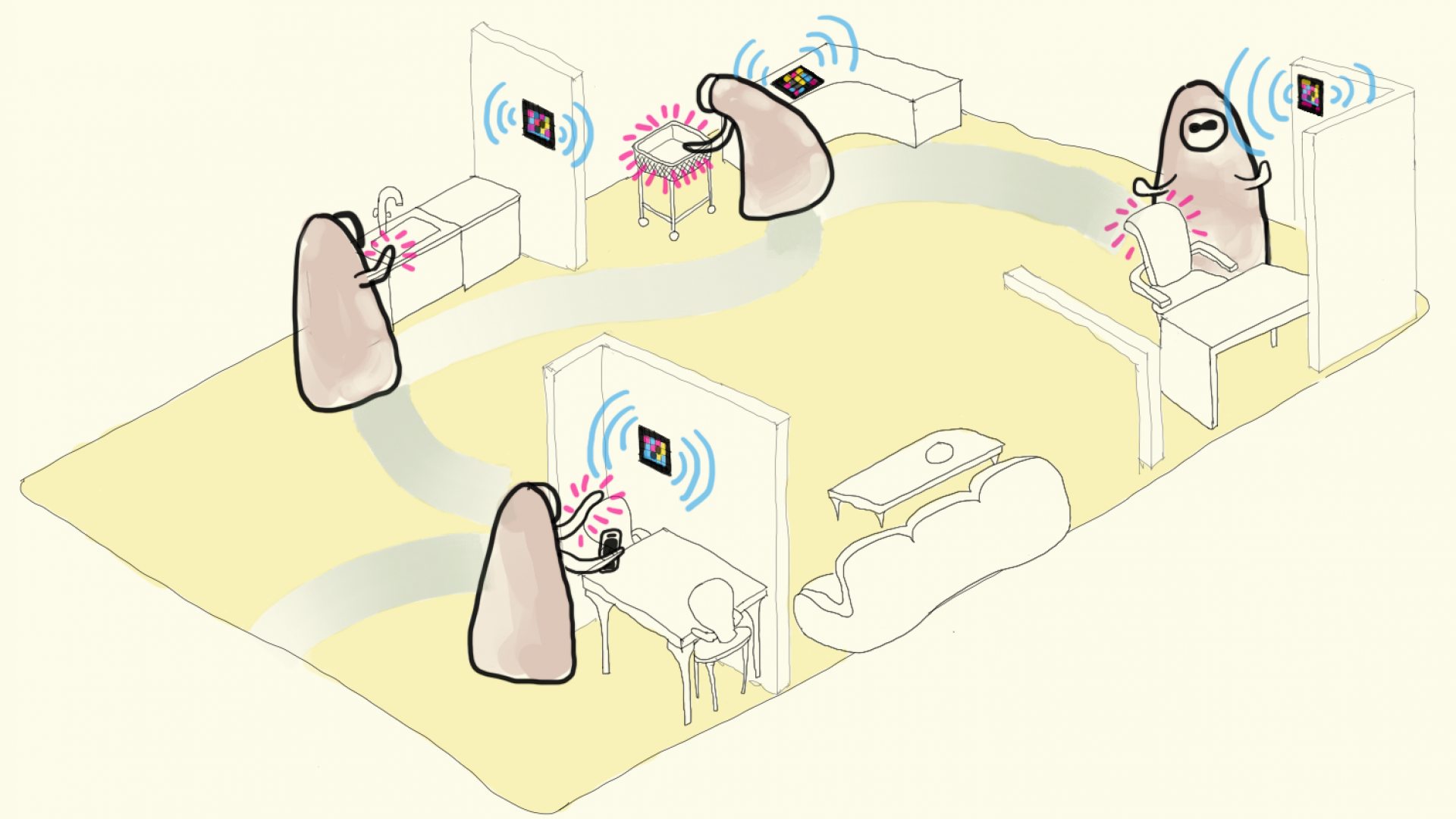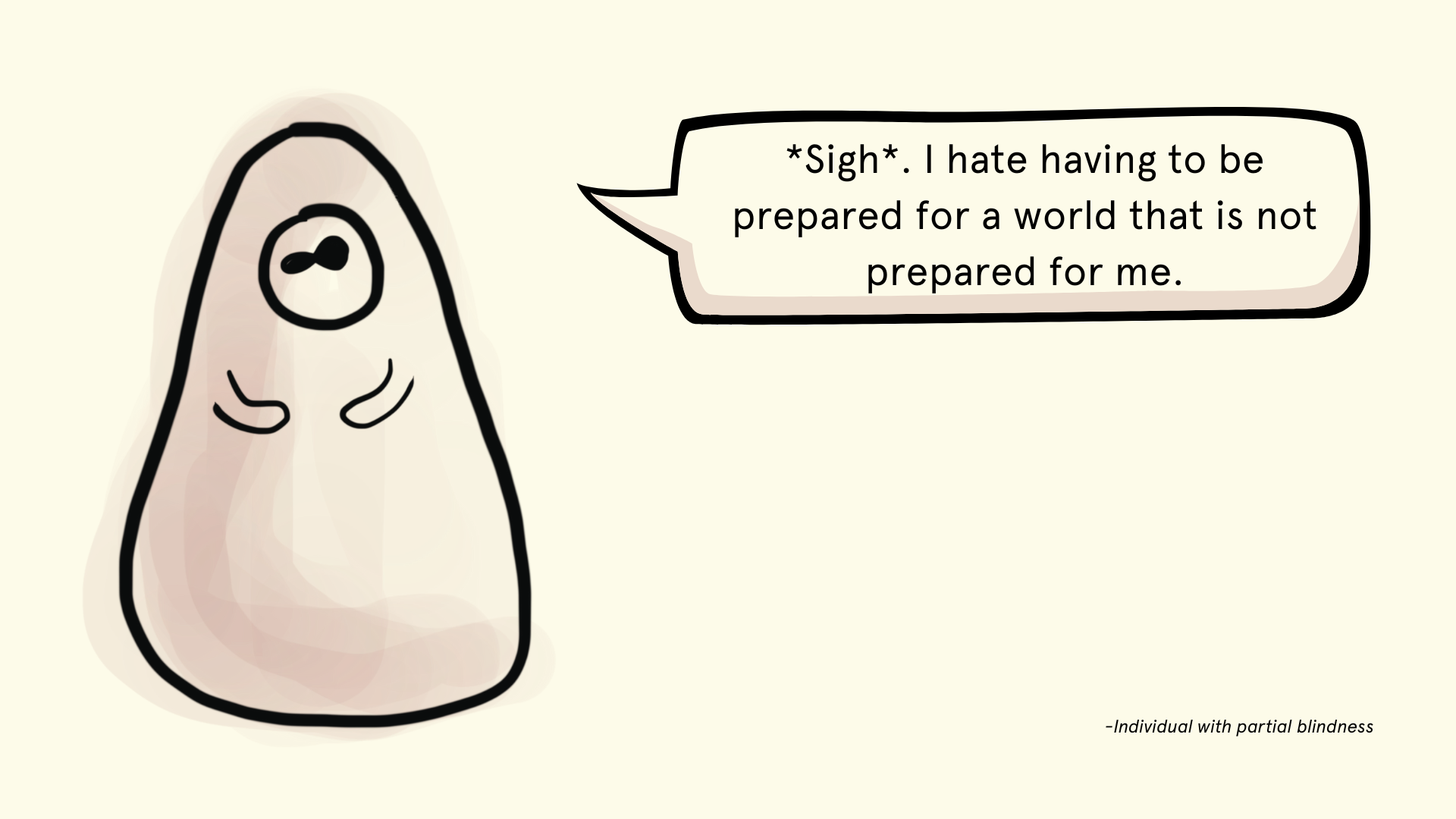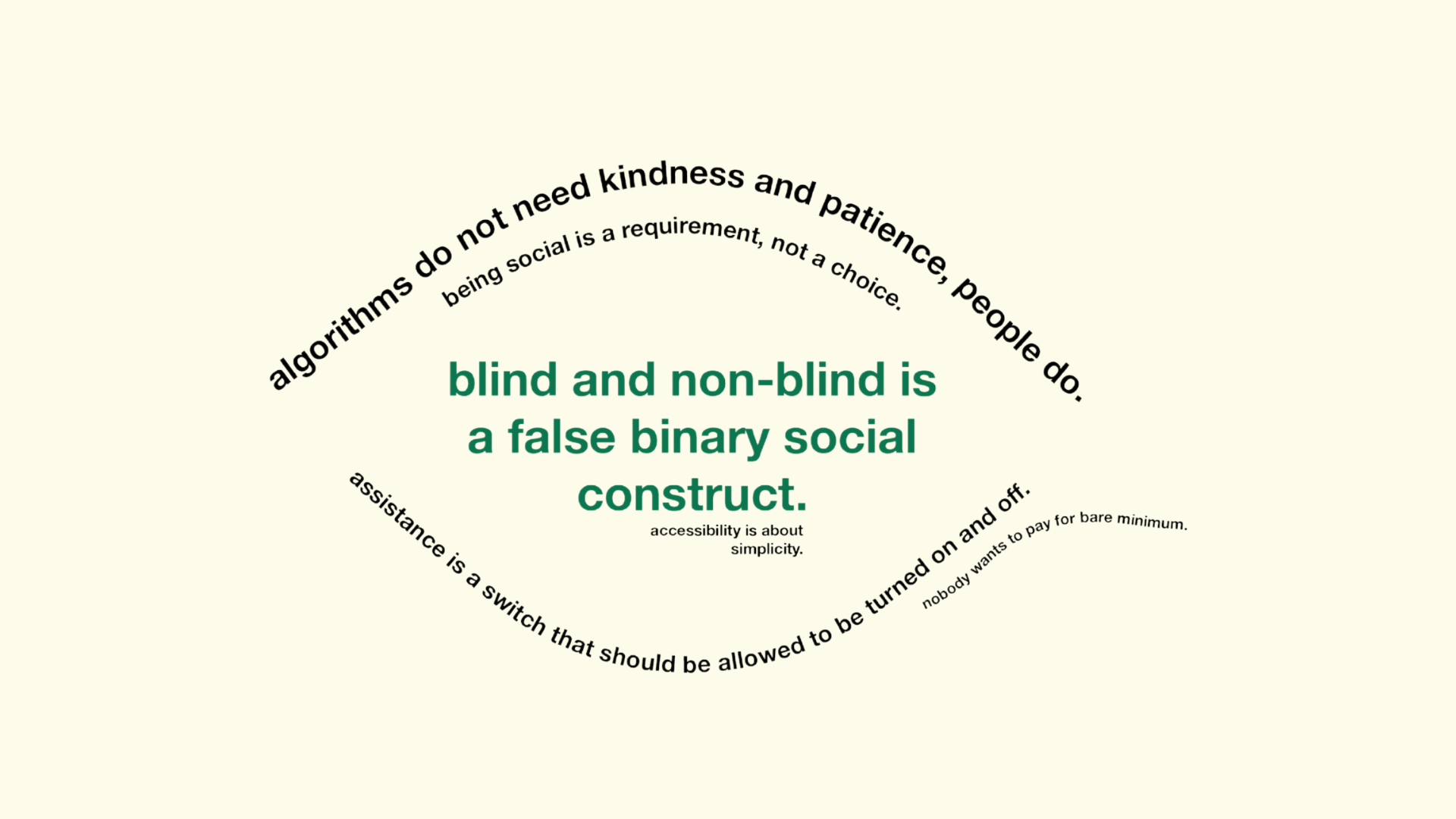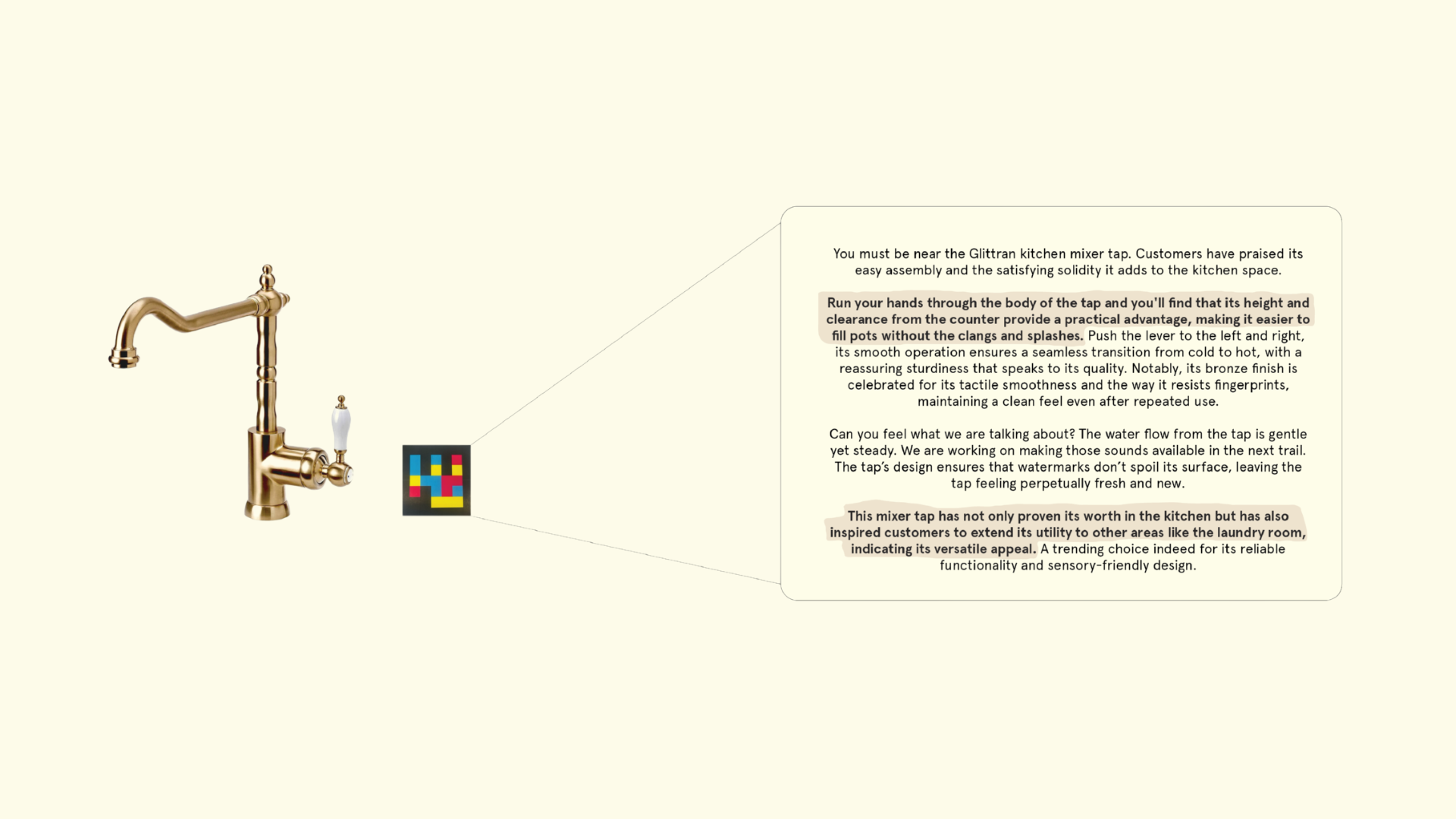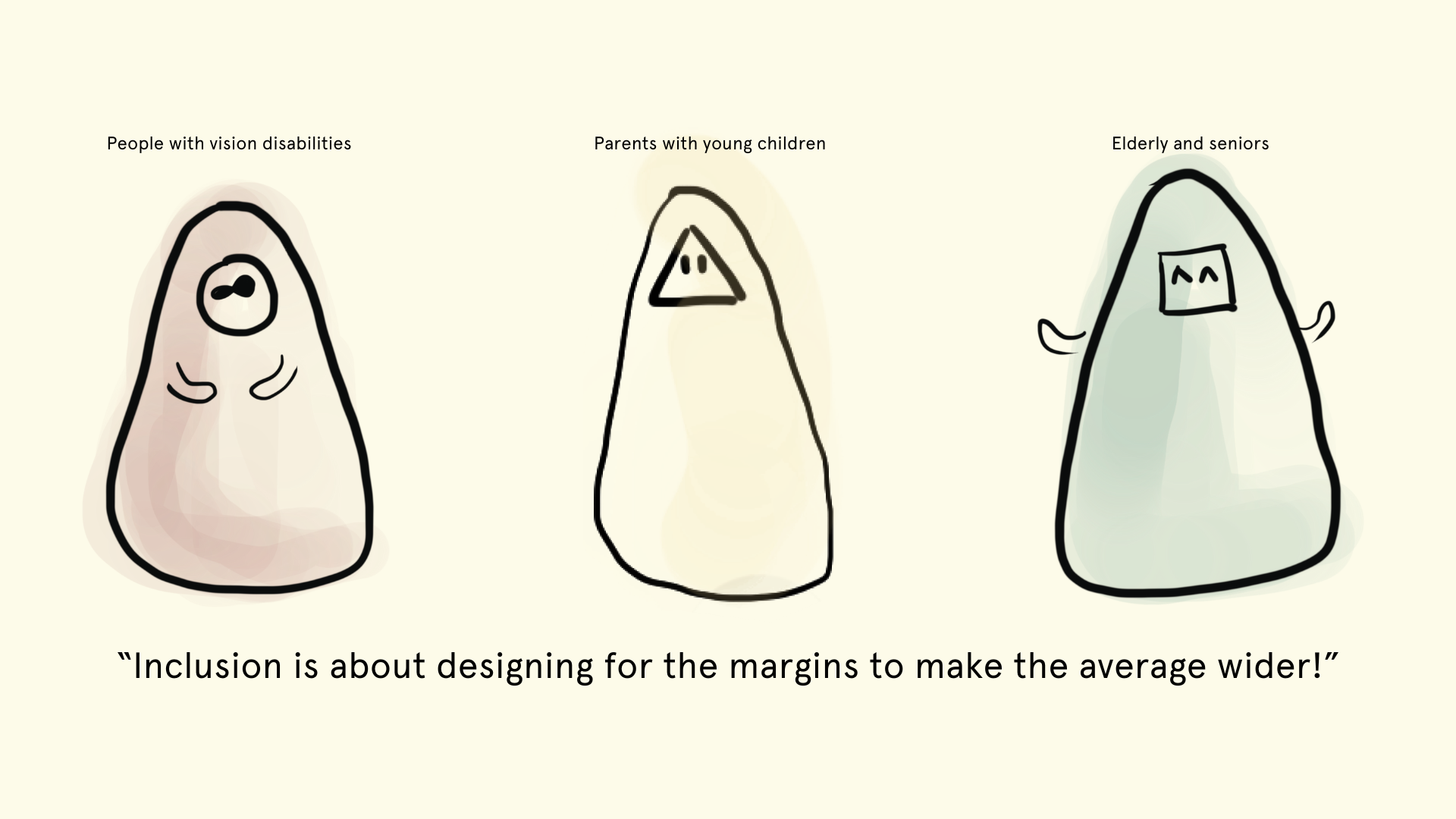Shopping that Engages Multiple Senses
Physical stores exist because people want to touch and experience products before buying them. Yet, most retail design today only engages one sense effectively, making it increasingly difficult to navigate for those with visual disabilities like low vision and blindness. Consequently, they are left with little choice but to prepare in advance, many times even leaning on others for help- thus reducing their sense of freedom in this process.
This project explored what happens when we design a technology-driven, emotion-enabling retail experience that engages multiple human senses.
Collaborative research revealed that offering sensory choices creates better shopping experiences and instils a sense of agency not just for individuals with disabilities, but for a wider public.
Some people prefer quick visual scanning. Others benefit from detailed audio descriptions- like in museums. Many enjoy combining both approaches. The key insight? providing choice does not replace existing experiences- it enhances them. When retailers offer multiple ways for customers to engage with their product offerings, more people can shop comfortably and confidently, with no compromise of time or effort.
How Trails Works
A ‘Trail’ is a consolidated and curated pathway within a retail store. This path contains smart codes that trigger audio descriptions based on real customer purchasing behaviours and reviews. Instead of random information, you receive organised insights from people who actually bought and used these products. Furthermore, the audio layer guides shopping discovery through tangible information- how surfaces feel, how mechanisms work, which combinations other customers loved most, et cetera.
Trails transforms the act of shopping from browsing endless options into following thoughtfully compiled journeys. You spend less time wandering and more time discovering products that might better match your needs.
Good Design is Invisible but Inclusive
This work highlights the nature of inclusive design and its benefits- creating products, services and systems that work for the greatest extent of people across all demographics. It is designing for the margins to make the average wider.
Previously piloted at the flagship store of a major European retailer, Trails proved its value across diverse groups- parents with young children, students, elderly shoppers- all found richer benefits through multi-sensory choice.
This project represents a fundamental shift in thinking- from designing 'for' people, to designing 'with' them. True inclusion needs a genuine pivot in the mindset of creatives, entrepreneurs and makers- acknowledging all kinds of people as active contributors to the design process, not mere bystanders.
See, touch, listen- visit the exhibition to discover shopping through senses beyond sight.

 Free wifi available
Free wifi available
 Toilets available
Toilets available
 Fully wheelchair accessible
Fully wheelchair accessible
 Wheelchair friendly toilet available
Wheelchair friendly toilet available
